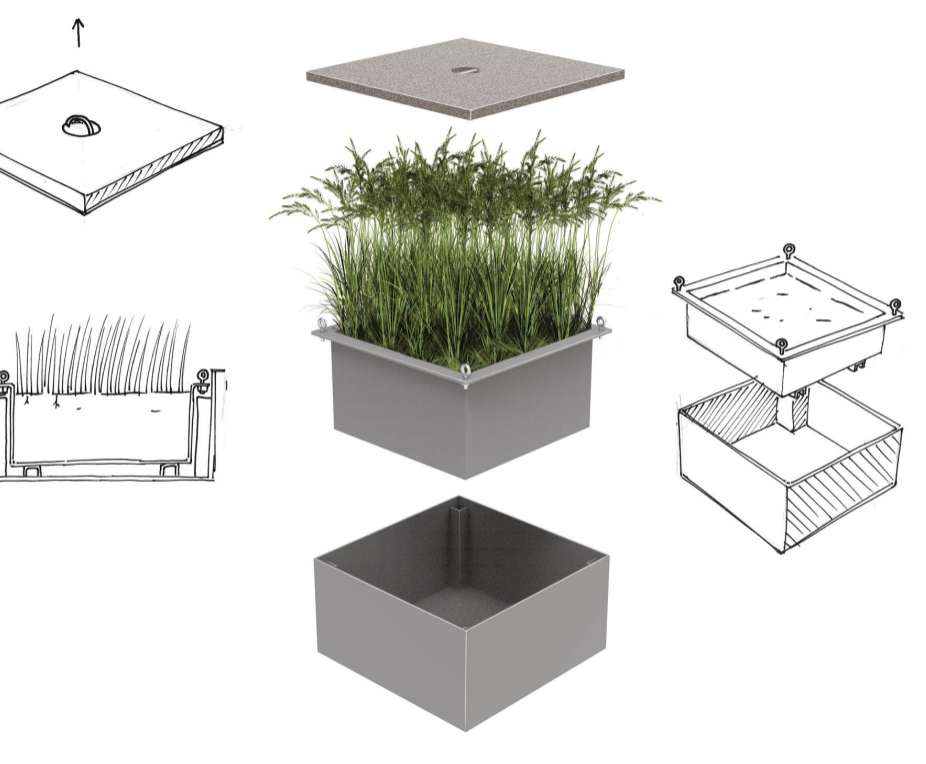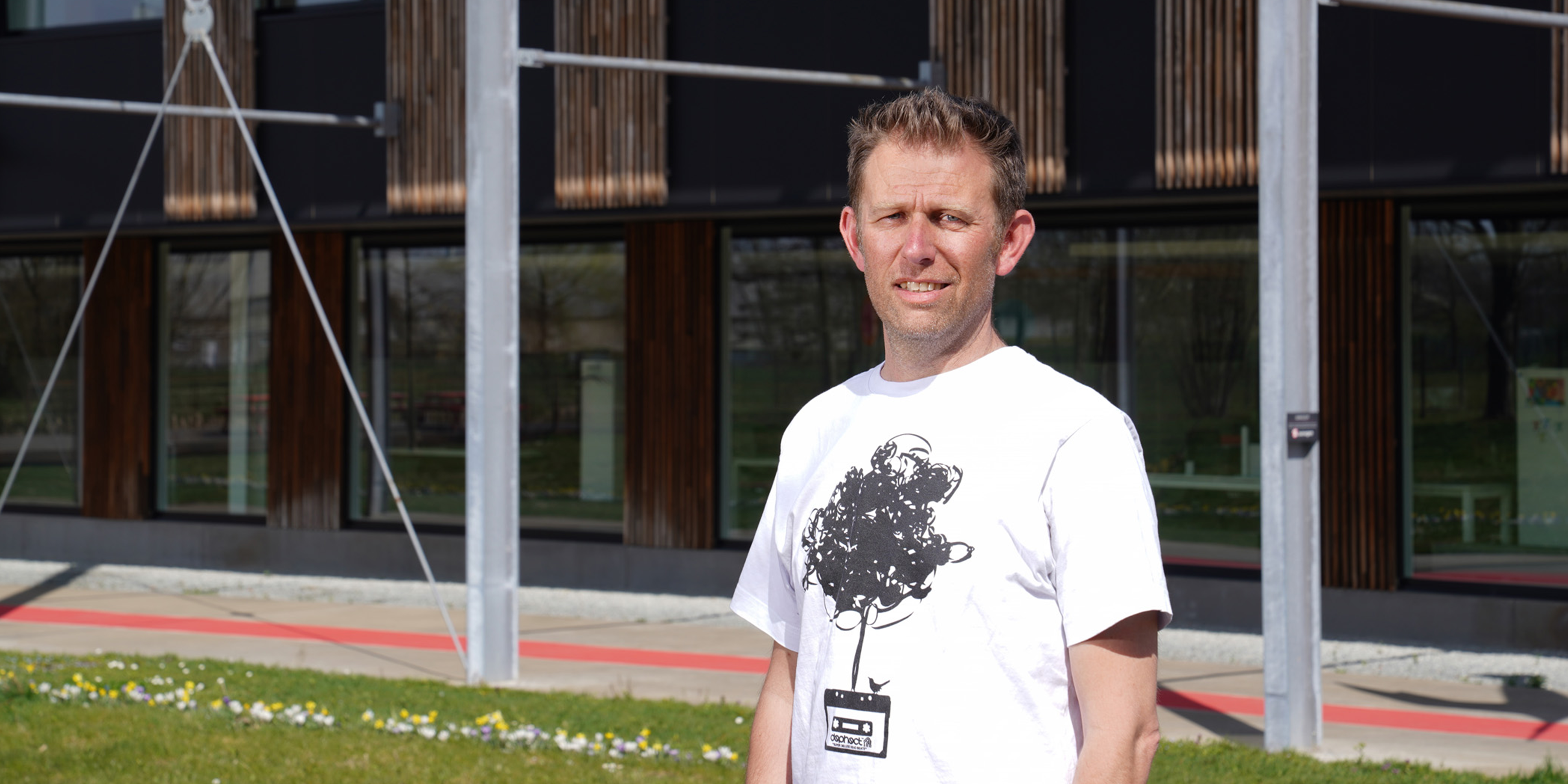Combatting soil artificialisation by means of elements made of concrete. This is made possible by these eco-friendly, movable green modules.
It’s no longer easy for climate change deniers to find valid arguments for their claims. The consequences of climate change are becoming increasingly tangible: extreme temperatures, flooding, etc. The urgency is clear, and many cities and towns consciously include the climate change in their policy. In southern West Flanders, for instance, a regional strategy has been developed to combat soil artificialisation at the instigation of Leiedal. In this region, there is an average of 301 m² paved surface for each inhabitant, with is almost 20 m² more than in the rest of Flanders. The region intends to rectify the situation by 2040.

20 m² does not seem to be all that much, but the challenge is complex. Vanessa Dehullu of DVC Consult mentions a first field of tension: “Public space is multifunctional. A village square must be green and attractive so as to make sure the local residents enjoy spending time there. But once or twice a year, that same village square must be suitable for a Christmas market or a large-scale performance. For this type of event, the square should be as flat and hard as possible. The same goes for small roads: cities and towns try to ensure safety by means of flower boxes and other interventions but in spring, these roads must be perfectly passable for major cycling races.”
Hannelore Fabri of Leiedal sees other fields of tension: “A major factor is maintenance. An increasing number of cities and towns are consciously thinking about removing concrete. But in practice, it’s still easier and cheaper to pour concrete on a surface, as it requires minimum maintenance. (Re)constructing streets and squares is not something that is done every few years. Public areas are renovated every 70 years on average. Although it may be possible to make changes afterwards, it’s much better to include the removal of concrete in the planning and design stage and to think ahead.”
The end result of the process is anything but a standard solution. Thanks to cocreation between designers, cities and towns and enterprises, an innovative green box was designed. This is a concrete module that helps combat soil artificialisation. Plants are put in the box in advance, so that they are already at their best by the time the box is placed in the ground. The box captures rainwater and thanks to a technique that is also used in roof gardens, the plants automatically receive water. This means no more irrigation. And no more concrete, because the surplus rainwater is absorbed by the soil. The box is also multifunctional: it can easily be removed and the opening can be closed with a sturdy lid, so that cycling races or other events can take place without any problems.
This is a solution that seems to be paradoxical, but is the perfect solution to a complex challenge.
Rutger Davidts, municipality of Zwevegem

Thinking ahead, that’s where Leiedal and Studio Dott came in. The existing intermunicipal consultation between officials responsible for green areas in the south of West Flanders was a perfect place to start. With the guidance of Leiedal and Studio Dott, they went on an intensive journey to reach a future-proof solution.
Rutger Davidts, head of the Green areas & Roads department of the municipality of Zwevegem, participated in almost all phases of the process. “During the first session, we accurately defined the challenge on the basis of photos and discussions. These discussions among like-minded people already gave us comprehensive insights and made us reach the core of the problem. For the second session, a designer joined the group. He had no prior knowledge of the issue, and that turned out to be a major advantage. The designer asked the questions we no longer ask ourselves. For instance, we take for granted that plants are preferably put in open soil. If that’s not possible, we use flower boxes, but they require irrigation etc. The designer asked us whether it is absolutely necessary for the flower boxes to be put above the ground."
“Sincere questions like that challenge you to break out of your set way of thinking. Apart from the product we eventually conceived, I feel that this is another important result of the entire process. Not only did this cooperation strengthen relations during the consultation, it also broadened our perspective. I now also apply this way of thinking to other aspects of our activities. Standard solutions are not necessarily the best solutions. You have to dare question the way you normally do things in order to come to a good solution."













